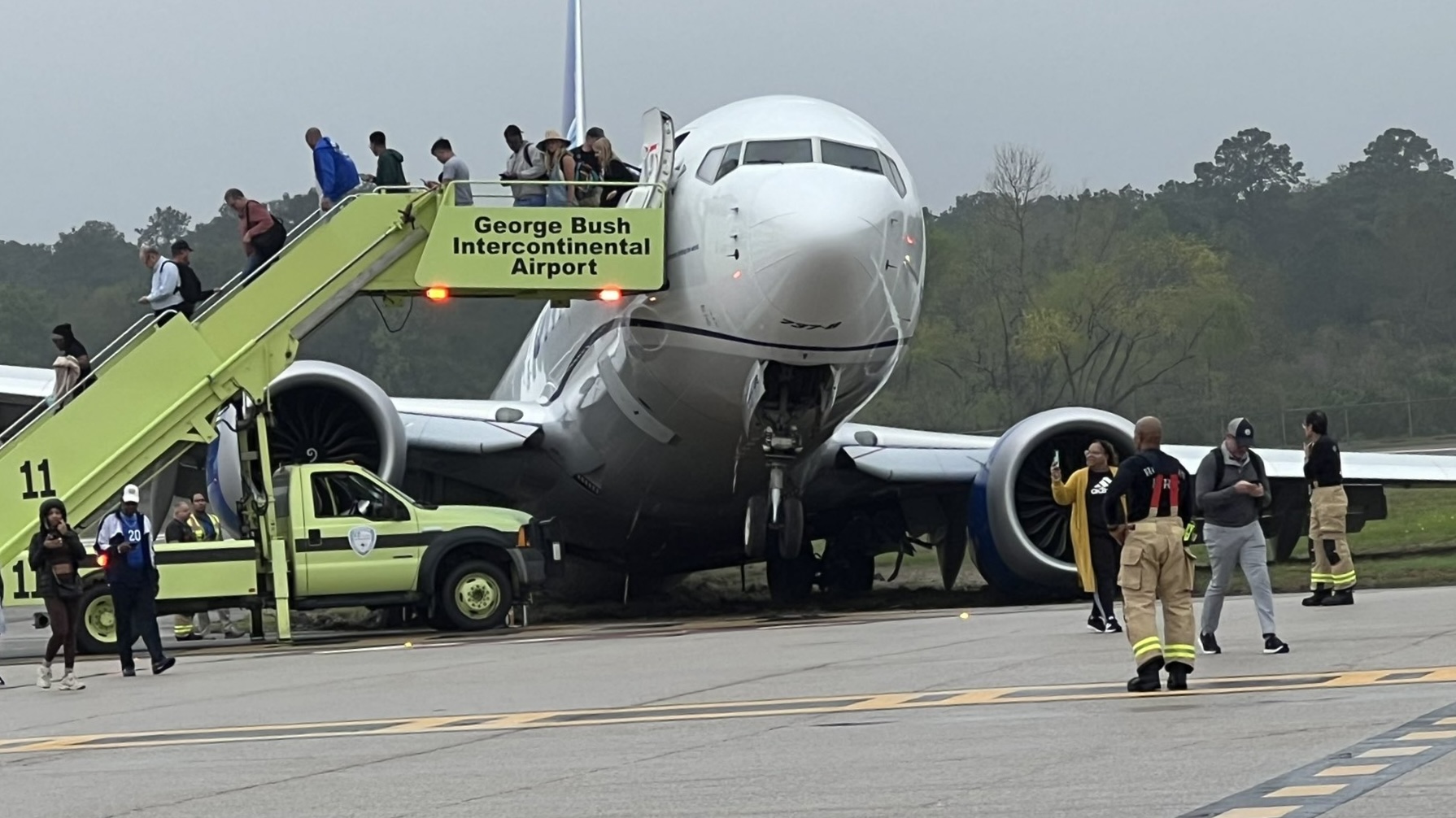On 8th March 2024, a United Airlines Boeing 737 MAX ran off the runway after landing at Houston’s George Bush Intercontinental airport, coming to rest with a landing gear sunk into the grass.
The Boeing 737 MAX 8 with registration N27290 was performing flight UA2477 from Memphis to Houston Intercontinental with 160 passengers and 6 crew on board. Flight UA2477 landed on Houston’s runway 27 and slowed to taxi speed (about 30 knots) before attempting to turn right off onto the last taxiway, as reported by the Aviation Herald.
However, as it slowed down to turn right onto the last taxiway, the aircraft skidded and continued straight after turning approximately 45 degrees. It eventually came to a stop on soft ground off the runway with the left main gear sunk into the grass, as seen in the footage shared on the internet.
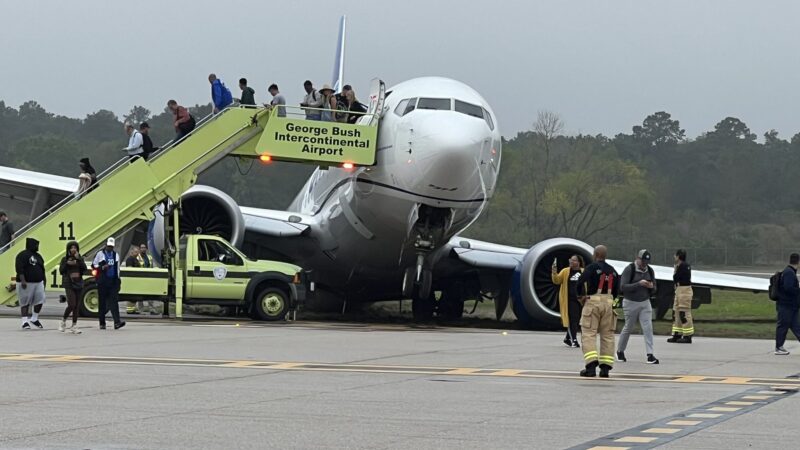
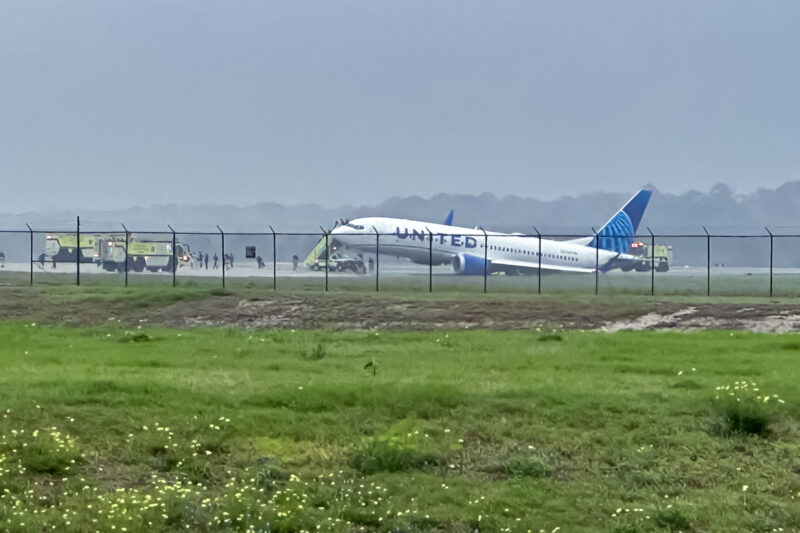
According to reports, the landing proceeded normally, but when the crew attempted to turn off, the aircraft was traveling too fast. This reportedly led to the skid, and sinking of the gear into soft ground.
Passengers disembarked onto the runway via stairs and no one was injured in the incident. However, the extent of the damage sustained by the aircraft is yet to be known.
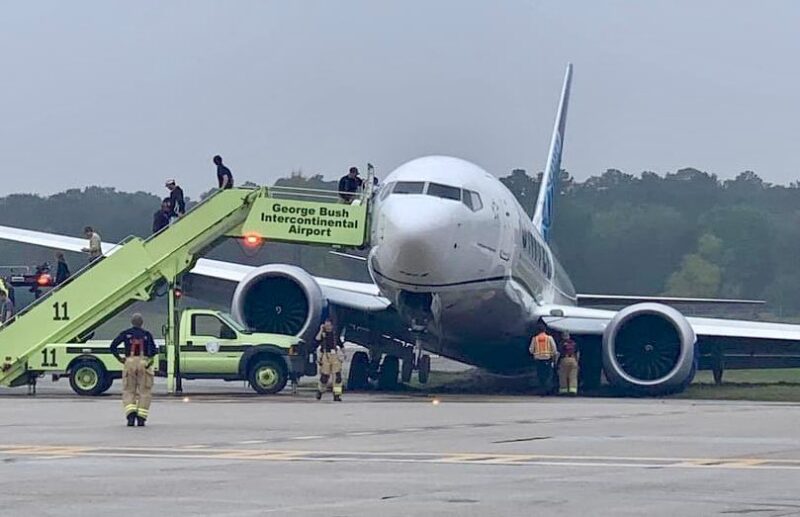
The Federal Aviation Administration (FAA) and the National Transportation Safety Board (NTSB) have launched an investigation into the occurrence. At the time of the incident, local weather consisted of heavy rain and reduced visibility.
“After landing at George Bush Intercontinental Airport in Houston, United Airlines Flight 2477 rolled onto the grass when exiting onto the taxiway around 8 a.m. local time on Friday, March 8. The passengers deplaned on the taxiway and were bused to the terminal. The Boeing 737 departed from Memphis International Airport. Please contact the airline for additional information. The FAA will investigate.”
FAA Spokesperson
The NTSB confirmed that it has dispatched an investigation team to Houston to probe the runway excursion involving a United B737 MAX at Houston’s Intercontinental Airport.
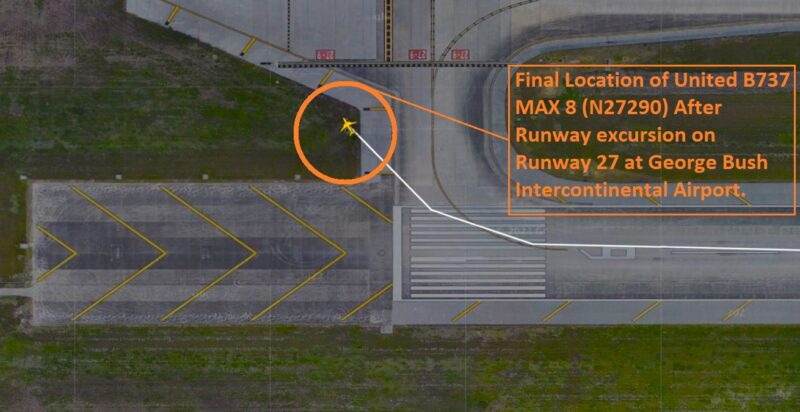
This incident comes just one day after another United Boeing aircraft lost one of its landing gear tires during takeoff from San Francisco, forcing it to divert and make an emergency landing in Los Angeles.
NTSB Investigates United Airlines 737 MAX 8 Rudder Issue at Newark
The National Transportation Safety Board (NTSB) is looking into a February 6th incident involving a United Airlines Boeing 737 MAX 8. The B737 MAX operating flight UA1539 experienced a problem with its rudder pedals while landing at Newark Liberty International Airport (EWR).
According to the flight crew, the rudder pedals became unresponsive while trying to maintain the aircraft’s centerline after touchdown. The NTSB reviewed flight data and found it supported the pilot’s report.
Following the incident, United Airlines conducted a test flight on February 9th at EWR to replicate the reported malfunction. This prompted a formal investigation by the NTSB, who are working with the FAA, Boeing, and Collins Aerospace.
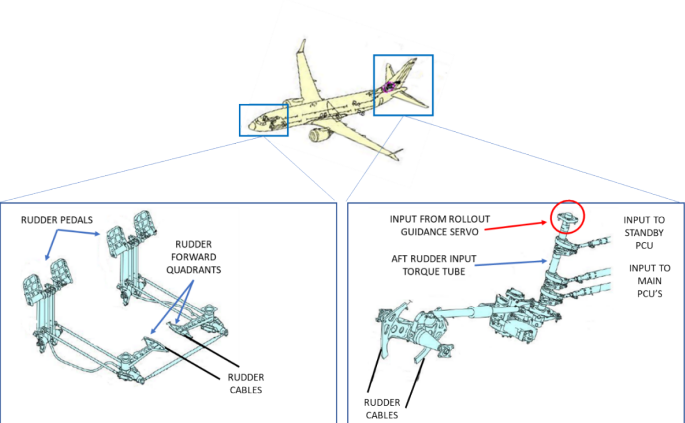
While the investigation is ongoing, the focus seems to be on a specific part of the rudder control system – a disabled rollout guidance SVO-730 servo that remained connected even though it wasn’t functioning. Initial tests suggest that cold temperatures might have affected this servo, causing it to restrict movement and impacting the rudder pedals.
The NTSB will continue to examine the servo and other components as they work to determine the exact cause of the incident.
“Because the servo output crank arm is mechanically connected to the rudder input torque tube, the restricted movement of the servo’s output crank arm would prevent the rudder pedals from moving as observed during flight 1539 and the test flight. Further examination of the SVO-730 rollout guidance servo will be conducted as the investigation continues.”
NTSB Spokersperson
Feature Image via Janet Bumbarger


